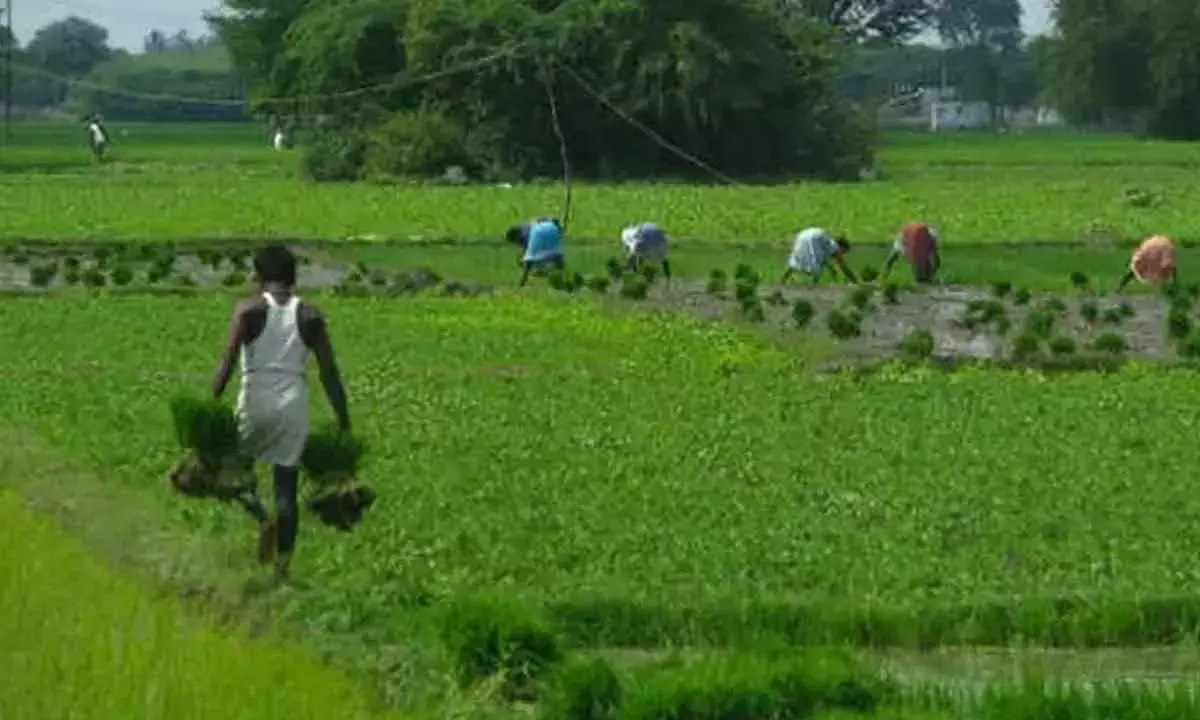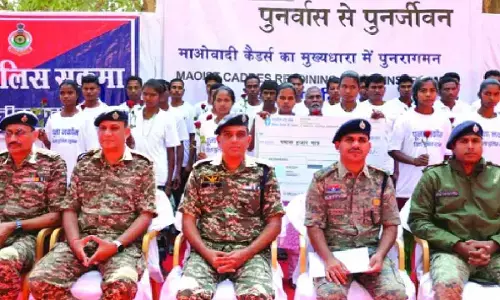Only a prosperous farming community, social equality can usher in Viksit Bharat

In the fiscal period 2022-23, agricultural exports reached $ 53.1 billion
The Union Ministry of Commerce and Industry has detailed about how from its modest beginnings with annual exports of $ 0.6 billion during 1987-88, proactive interventions by the Agricultural and Processed Food Products Export Development Authority (APEDA) have taken agricultural exports to a remarkable $ 26.7 billion in the fiscal year 2022-23. This journey of exponential growth is underscored by expanding the export basket to over 200 countries, showcasing a commendable Compound Annual Growth Rate (CAGR) of 12 per cent.
It also reaffirms the resilience and toil of our farm labourers and farmers. Braving odds and challenges, they not only ensure that our coffers overflow with grains but we also have enough spare grains to export them to many other countries.
The Ministry said that in the fiscal period 2022-23, agricultural exports reached $ 53.1 billion, with APEDA contributing a significant 51 per cent of the country’s agri-exports.
In April-December 2023, among 23 Principal Commodities (PCs) in APEDA’s export basket, 18 exhibited positive growth. Notably, 13 out of 15 large PCs, with exports exceeding $ 100 million in the previous year, experienced positive growth, with an average growth rate of 12 per cent. Fresh fruits emerged as a standout performer, registering a remarkable growth of 29 per cent.
Moreover, the export of processed vegetables surged by 24 per cent in the period followed by miscellaneous processed items, basmati rice and fresh vegetables also saw substantial growth as compared to the corresponding period last year. During April-November 2023, several key commodities witnessed substantial growth compared to the previous year, like bananas 63 per cent, lentils (dried and shelled) 110 per cent, fresh eggs 160 per cent and Kesar and Dasheri mango 120 per cent and 140 per cent, respectively. Notably, India has significantly expanded its fresh fruits export footprint, now serving 111 countries compared to 102 destinations in the previous year.
The Ministry also revealed that during April to December 2023, the export value of basmati rice surged by 19 per cent, reaching $ 3.97 billion as compared to $ 3.33 billion in the previous year. Simultaneously, the quantity of exports witnessed a notable growth of 11 per cent, increasing from 31.98 lakh metric tons to 35.43 lakh metric tons within the same timeframe. Basmati rice found its way to the top markets, with Iran, Iraq, Saudi Arabia, the USA, and the UAE emerging as the top five destinations for these exports. This robust performance underscores the enduring popularity and global demand for this variety, further solidifying its position as a major agricultural product in India’s export portfolio.
Farmers in Punjab, Haryana, Western Uttar Pradesh, J&K, Himachal Pradesh, Delhi and Uttarakhand have made India a leading exporter of basmati rice. After meeting the domestic needs including that of the poor, the surplus farm produce should be encouraged to be exported. If possible, farmers in general and marginal farmers in particular should be motivated and helped adequately to cultivate cash crops to enhance their income so that they are also able to improve the ease of their own living. Being the backbone of the Indian economy and the mainstay of the country’s 80 per cent population, agriculture needs better attention from the Central and State governments.
According to one estimate, there are more than 12 crore small and marginal farmers in India, with an average land holding size of less than 1.1 hectares. Most small and marginal farmers need access to both production and post-production functions such as technology, quality inputs at reasonable prices, seed production, units of farming machinery, value added products, processing, credit, investment, and most importantly, markets. It will help them a lot but still they won’t be able to meet their basic needs if they own just two to three hectares of cultivable land. Then there are tenants who engage themselves in farming for a marginal benefit. Less we talk about their problems is better.
The real challenge before us is to identify farmers in desperate need in the real sense of the term. A farmer with three hectares of land and no other source of income will always be hard pressed financially and hence he will compromise with education and health facilities of his children. Though many experts argue against differentiating between rich and poor farmers, one needs to know who owns how much land today even after the disintegration of the joint families. If one has 10 hectares of ancestral agricultural land even after the ceiling and divisions of landed properties at different levels among family members, then we need to look into the matter. If we have political problems or we lack confidence in doing so, then we should give preferential treatment to marginal farmers.
The rich farmers have multiple other sources of income. Barring exceptions, their children and grand-children are better placed. They have a bigger say in our political realm as well. On the other hand, poor and marginal farmers suffer on many counts along with farm labourers. Their children have to face the brunt of caste-based discrimination too, as majority of marginal farmers belong to SC, ST and OBC communities. Even they have to struggle a lot to reap the benefits of affirmative measures meant for them, which makes their life more challenging, and further widens socio-economic chasm between the haves and have-nots.
If serious efforts are being made to build a Viksit Bharat by 2047, then we cannot ignore the plight of those who have been deprived of their rightful share in national resources like lands, facilities and opportunities, over the years. A call has to be taken on how to ensure that no social group is deprived of the benefits of a developing India. If 80 per cent Indians are meant to be ruled by 20 per cent super rich among us, then the dream of building an inclusive Viksit Bharat will never be realized.










